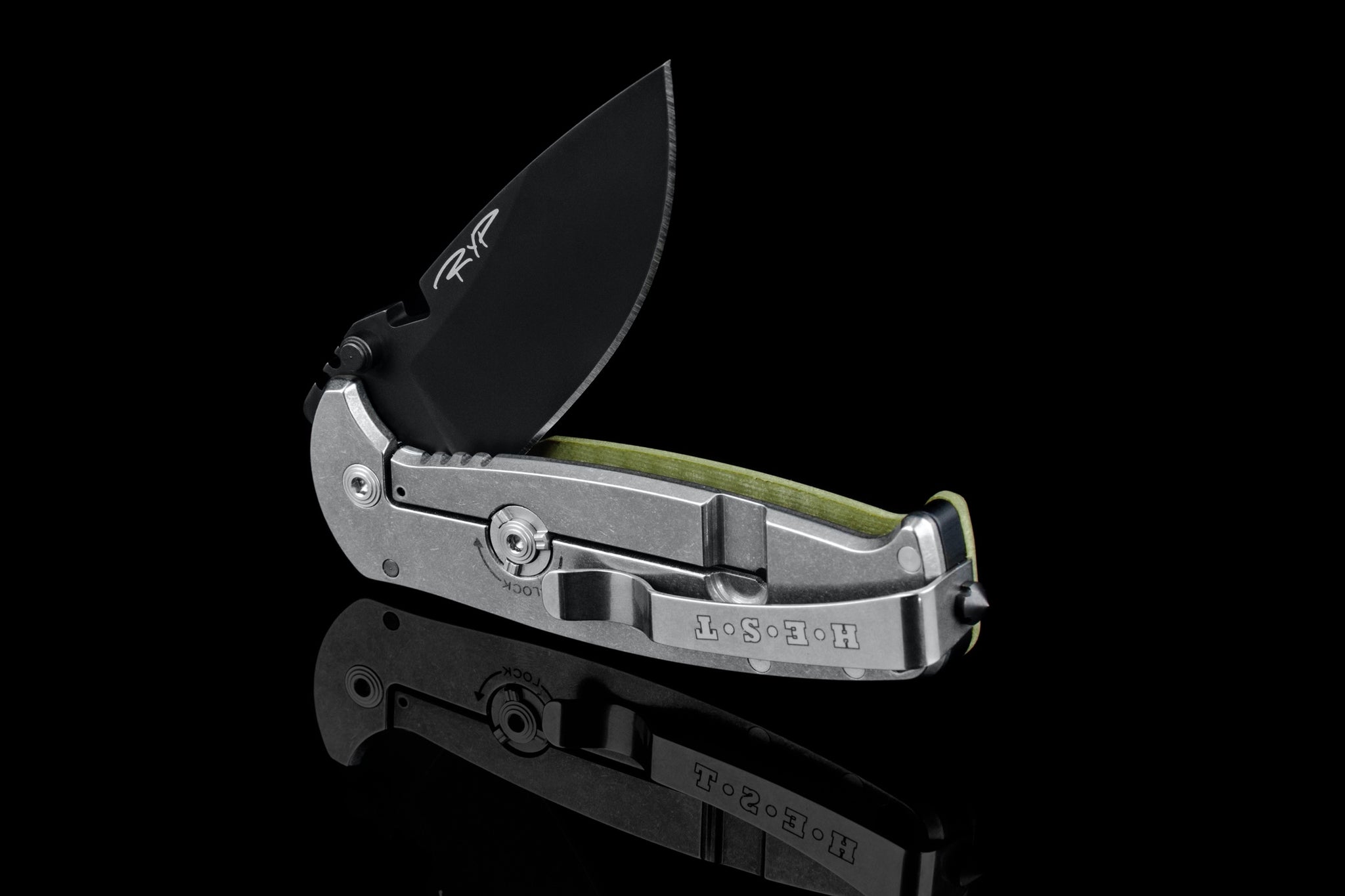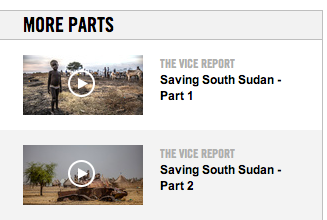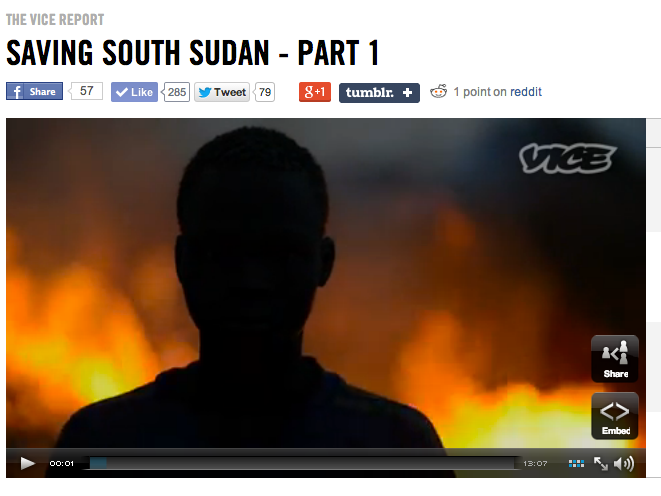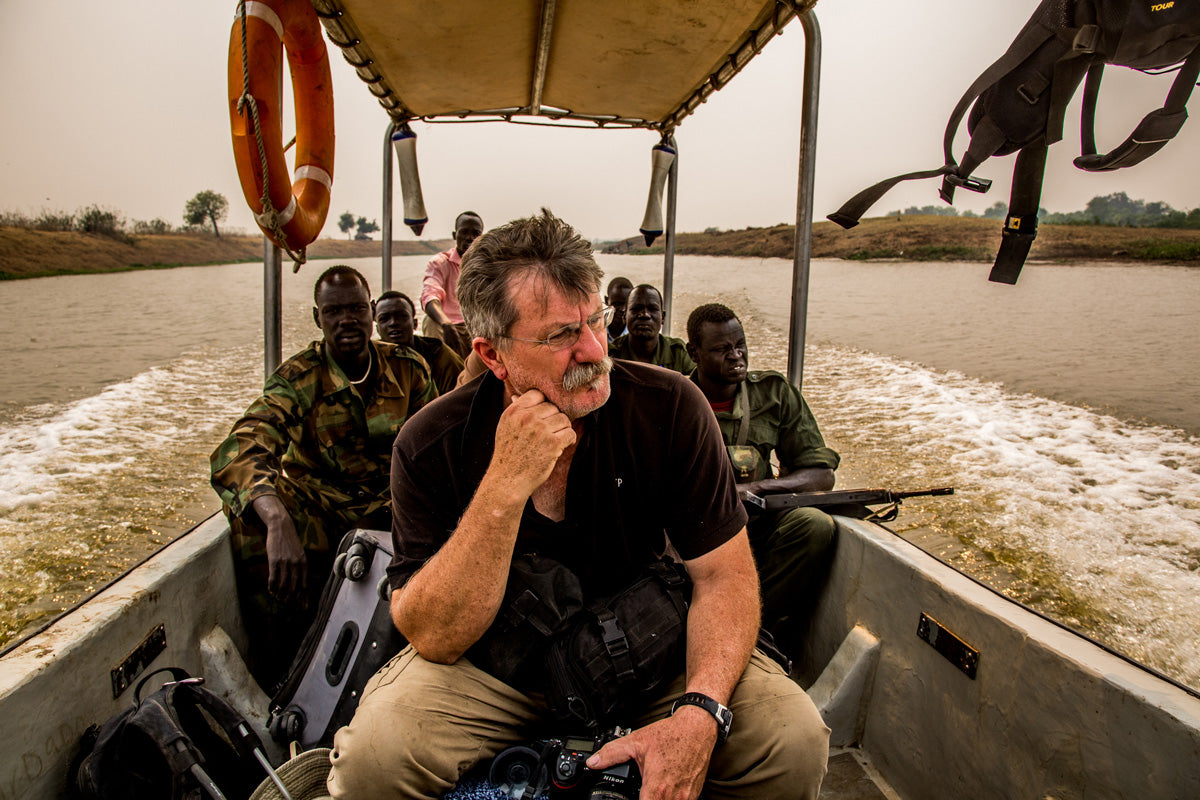
The Differences Between the HEST/F 1.0 and 2.0
BLADE PIVOT
- The position of the blade pivot was moved.
- The position of the touching point between blade and locking bar was moved; In the first run this point was 5.8 mm away from the blade pivot, the second run is 6.7mm. This has reduced the movement; less power from the blade to locking bar.
- You can not touch the edge with a finger when the blade is closed. There is more space from the edge to the back of the knife.
LOCKING BAR
- The locking bar is longer. The thrust angle was reduced on the frame from 42° to 37.9°; this creates less twisting of the locking bar.
BLADE ANGLE
- The angle in the heel of the blade was changed. The old one was 11°, the new one is round.
THUMB STUD
- The thumb stud is 14.3 mm away from the blade pivot, the old one was 13.5 mm. This adjustment makes it easier to open the blade.
HANDLE
- The bottom of the handle is larger, so no problem with tip of the blade sticking out of handle in a closed position.
- There is more space on the G10 handle fora finger to unlock the locking bar.
- The new thickness of the G-10 is 4.2 mm, vs. the old one, which was 3.2 mm.
SPACER
- The spacer is longer, making a more solid knife.
LINER
- The stainless steel liner has been removed.

VICE Magazine Saving South Sudan Documentary Parts 2 & 3
The final parts of the 45 minute documentary using footage from DPx Gear founder Robert Young Pelton's trip to South Sudan is now posted on the VICE website.
“Saving South Sudan” is a very special and timely project that uses the entire contents of VICE’s 50,000-word print magazine, an online event at VICE.com, and a three-part documentary series. Taking a multi-platform approach, VICE tells the story of how the world’s newest sovereign country descended into its third civil war in a century.
While the magazine has published innumerable issues devoted to single topics and themes—from art to humor to war crimes in Syria—this is the first time all of its 130 pages have been filled by just two contributors: author and filmmaker Robert Young Pelton and photographer and filmmaker Tim Freccia.
You can view Part 2 here, view Part 3 here, and read the entire issue here.

VICE Magazine Saving South Sudan Documentary Part 1
Part one of the three-part, 45 minute documentary using footage from DPx Gear founder Robert Young Pelton's trip to South Sudan is now posted on the VICE website.
“Saving South Sudan” is a very special and timely project that uses the entire contents of VICE’s 50,000-word print magazine, an online event at VICE.com, and a three-part documentary series. Taking a multi-platform approach, VICE tells the story of how the world’s newest sovereign country descended into its third civil war in a century.
While the magazine has published innumerable issues devoted to single topics and themes—from art to humor to war crimes in Syria—this is the first time all of its 130 pages have been filled by just two contributors: author and filmmaker Robert Young Pelton and photographer and filmmaker Tim Freccia.
You can view the documentary here and read the entire issue here.

Saving South Sudan: A Landmark Multimedia Event on VICE.COM
VICE announces a major multimedia event: “Saving South Sudan—The Inside Story on How the World’s Newest Nation Fell Apart,” by Robert Young Pelton, Tim Freccia, and the VICE staff.

“Saving South Sudan” is a very special and timely project that uses the entire contents of VICE’s 50,000-word print magazine, an online event at VICE.com, and a three-part documentary series. Taking a multi-platform approach, VICE tells the story of how the world’s newest sovereign country descended into its third civil war in a century.
While the magazine has published innumerable issues devoted to single topics and themes—from art to humor to war crimes in Syria—this is the first time all of its 130 pages have been filled by just two contributors: author and filmmaker Robert Young Pelton and photographer and filmmaker Tim Freccia.
The idea originated with Pelton, who in early January pitched VICE a long-form story about traveling to South Sudan with Machot Lat Thiep, 32, a former Lost Boy and current manager of a Seattle Costco. Machot had returned to his homeland a year earlier to help put together a new constitution. It had been a jubilant and triumphant trip for the former child solider.
Pelton’s ultimate goal was to find South Sudan’s former vice president, Riek Machar. Machar had been fired from the government led by President Salva Kiir, and on December 15, 2013, the Nuer leader had found himself the target of an assassination. An onslaught resulted in the destruction of his home and the massacre of his advisers. Since then, Machar has been hiding out at a secret bush camp as thousands of Kiir’s men have tried to hunt him down.
This time around, Machot viewed returning to his homeland as an attempt to help pull South Sudan out of yet another dive into a seemingly never-ending cycle of war and starvation. For Pelton and Freccia, it was a chance to get on the ground and document the conflict, which has turned the three-year-old country into the world’s latest failed state.
 Machot would serve as an avatar for the readers and a touchstone for the emotional impact of war. He would deliver an insider’s point of view to ensure that the history of the region was appropriately taken into context.
Machot would serve as an avatar for the readers and a touchstone for the emotional impact of war. He would deliver an insider’s point of view to ensure that the history of the region was appropriately taken into context.
The journey was not easy. The team almost had to give up and return home after weeks of being stalled in Nairobi, Kenya, unable to find a pilot foolhardy enough to fly them into the middle of the violent war. Then, once in South Sudan, the lack of vehicles and fuel meant they had to haggle and negotiate their way across the land to link up with Machar. After they secured the interview and lived with him at his secret bush camp, Machar granted them permission to witness and record his rebellion firsthand, hiring an escort to take them north to the front lines in Malakal, on the White Nile.
In Malakal, Freccia and Pelton exclusively experienced and documented widespread rape, murder, and looting by the “White Army”—a fearsome, makeshift force of Nuer cattle farmers historically commanded by tribal prophets.
Before Pelton and Freccia’s unprecedented access, the White Army had largely been something of a myth, a frightening apparition that until then had never been filmed in action.
VICE’s approach to the story of South Sudan is vast—historically, thematically, and emotionally. The multimedia event delves deep into the history of colonialism, covers misguided Western interference, and revolves around a profile of rebel leader Machar and a Lost Boy’s attempt to save his country. As Machar plots and coordinates his rebellion from his bush camp, Lost Boy Machot wanders inside one of the most dangerous, dysfunctional countries in the world.
“Saving South Sudan” is a terrific, sobering work that no one on Earth but Pelton and Freccia could have produced. Pelton, 58, is the author of the best-selling, one-of-a-kind travel guide The World’s
Most Dangerous Places (now in its fifth edition). He interviewed “American Taliban” John Walker Lindh, was kidnapped by right-wing death squads in Colombia (whom he photographed), and lived with an elusive retired Special Forces colonel training Karen rebels deep inside the jungles of Burma. Like many journalists, Freccia, 50, was inspired by Pelton’s endeavors, and he has made it his life’s work to document conflict and crisis across Africa and elsewhere. His photos provide a stark, riveting, and sometimes horrific look at the realities of life in South Sudan.
The VICE team worked feverishly to release this important project just as the world is turning its attention to what may be Africa’s newest and most disturbing humanitarian catastrophe.
You can read, watch, and experience “Saving South Sudan” on VICE.com now.

 Pelton and Freccia in Sudan
Pelton and Freccia in Sudan
